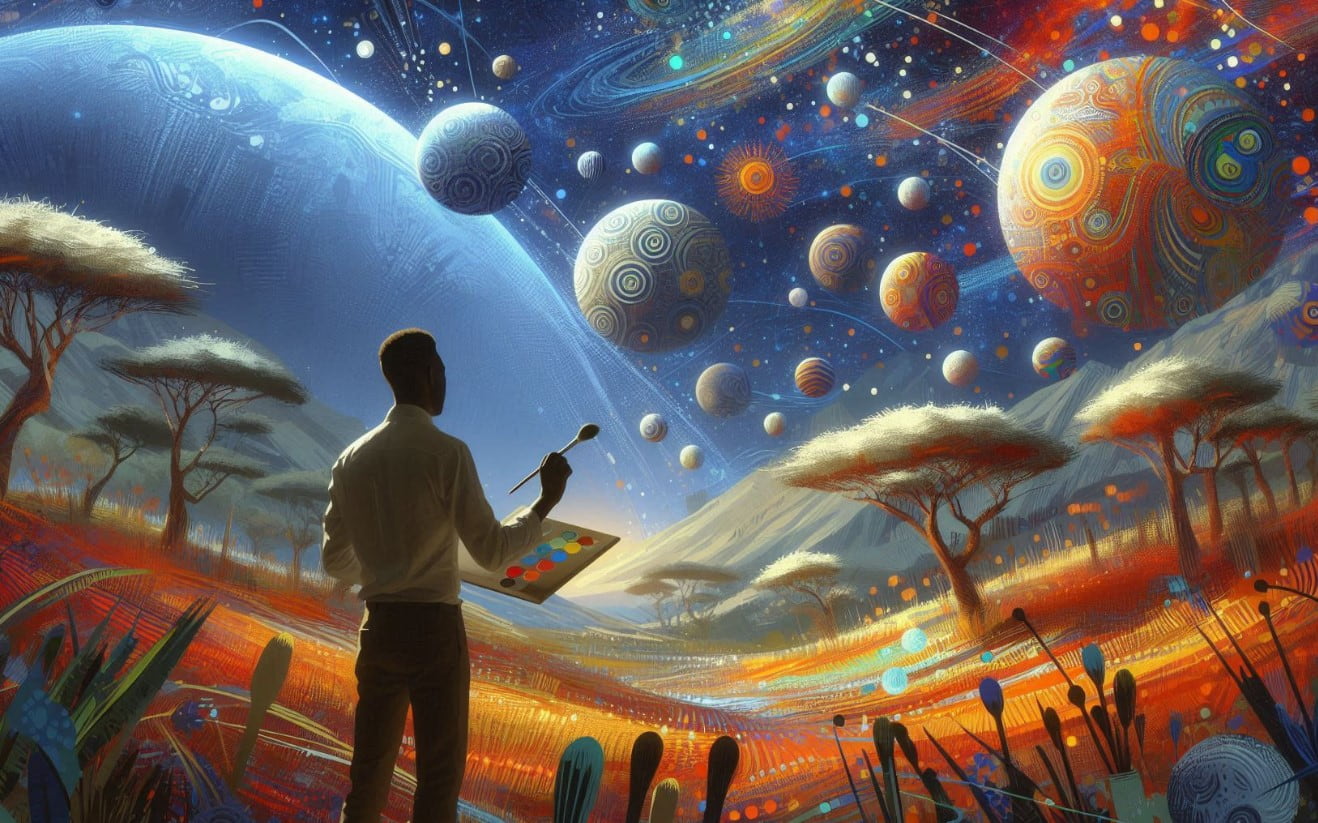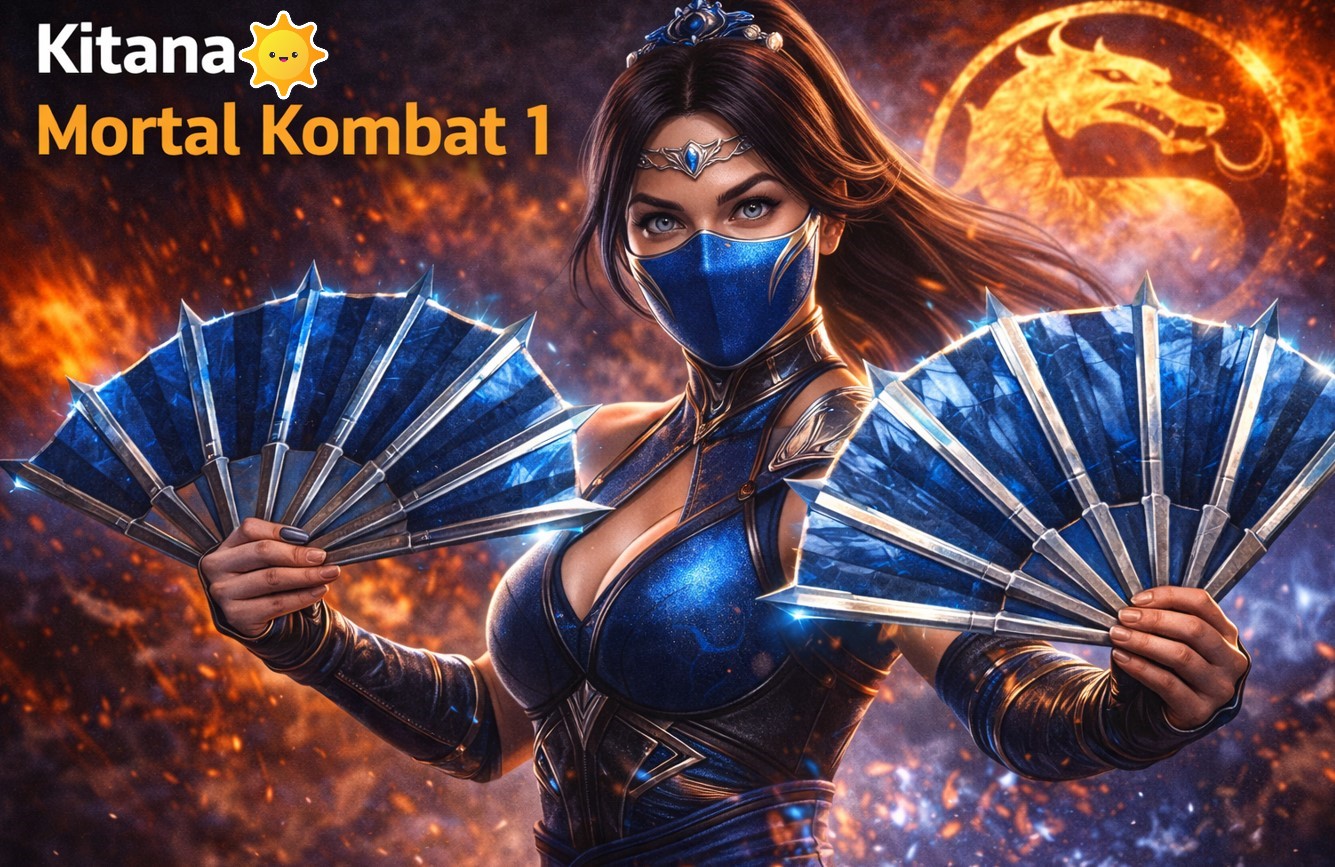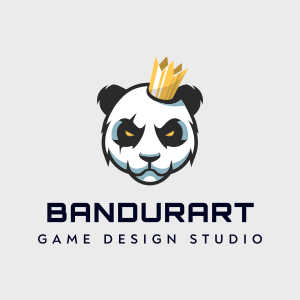Definition of a 2D Game Artist Job
Following the career of a 2D game artist can be a challenge. The BandurArt team knows this better than the others since we have been in the game development business for many years. This is a tough decision and not the simplest career to pursue but if you passionately love drawing awesome 2D art and pictures for video games, you should start it. Our guide is dedicated to the specifics of 2D game artist jobs in the USA and around the world. You are free to add your recommendations in the comments! Let’s begin!
A 2D game artist is a professional who focuses on the visual aspects of video games and creates 2D game graphics – art, concept, 2D game backgrounds, assets, etc. They are responsible for creating and designing various elements in the game like characters, assets, environments, UI components as well as frames for animations. Their artwork defines the mood and atmosphere for the player experience by making the game world immersive and visually appealing.

What Responsibilities Do 2D Game Artist Jobs Include?
The core of responsibilities related to 2D game artist jobs is the development of the game’s visual design. They make characters, backgrounds, UI elements, and animations – everything that you see in the game. Their task is to ensure that all the graphics look good and match with story or theme. This job mixes art skills, technical abilities, and storytelling to make games more engaging to play.
A 2D game artist is a gaming industry specialist who makes the visual things that make a game look realistic and immersive. This involves characters, vehicles, textures, clothes, and all the assets you can see in the game. Think about making a character that will be remembered by players for many years. This is what a 2D game artist should do.
These artists create artwork that aligns with the theme of the game and elevates its visual style. They are involved from the first idea to its last finish, driving creative plans ahead. They collaborate in a team to handle large or small projects with equal dedication and energy levels. Besides game assets, they also create visuals for marketing purposes.
Animations, character design, environment building, and user interface development are carried out by 2D game artists with the help of special software. The professionals can mix their classical art training/hand-drawing techniques with graphic design methods to make visually stunning and engaging game worlds. These professionals handle all aspects of creating a game’s visual elements – from textures and animations to modeling and rendering – making sure it looks fantastic.
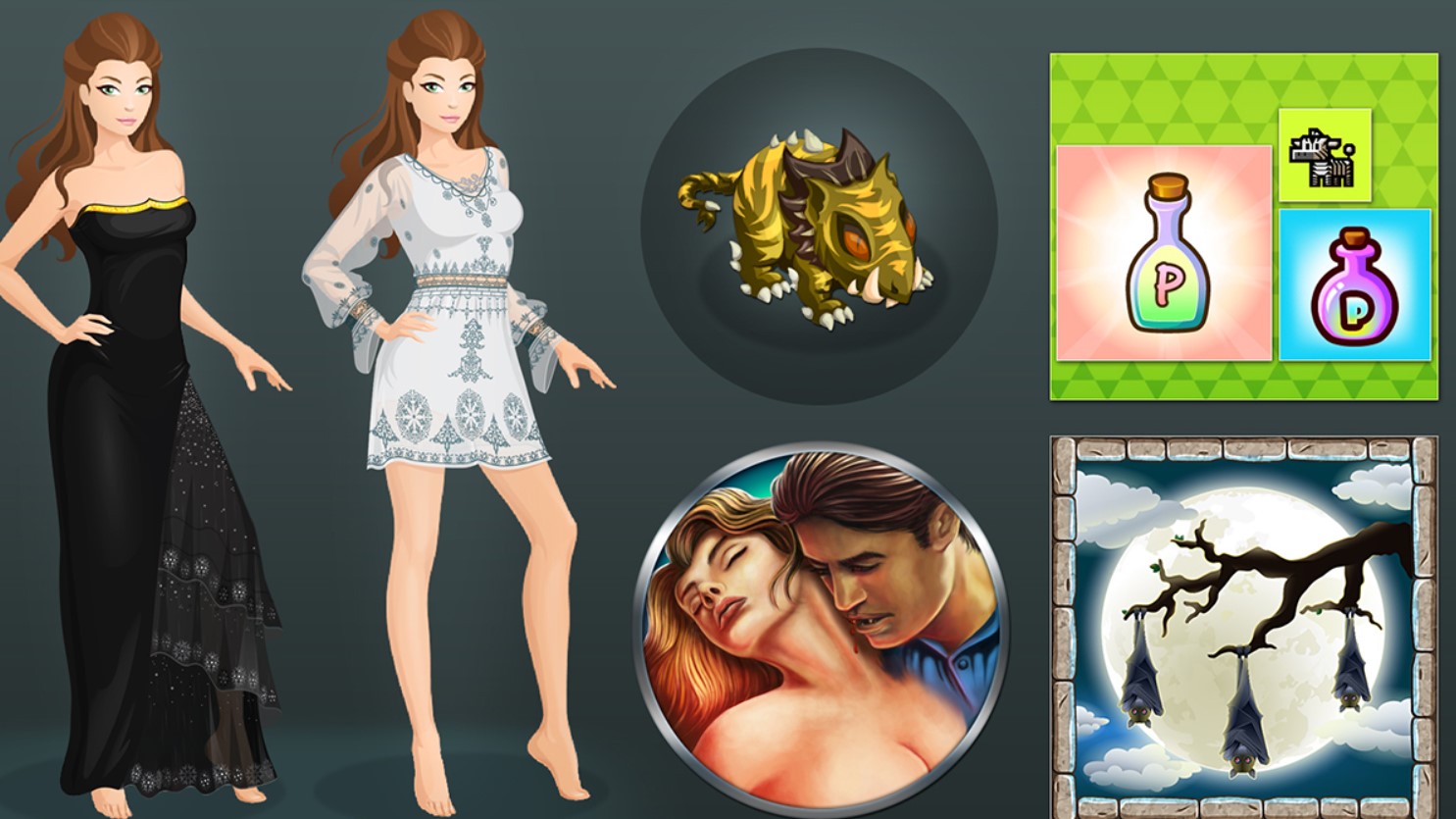
Key Responsibilities:
- Design all the artistic style for all the graphics and visual elements in the game – characters, assets, props, backgrounds, narrative solutions, etc.;
- Develop concept art to guide the visual direction of the game;
- Animate characters and objects, bringing motion and life to the game world, though, there is another 2D game animator job;
- Design all the user interface elements like menus, icons, and buttons;
- Coordinate with game designers for the smooth integration of the graphics assets into the game;
- Maintain a consistent artistic style throughout the game by working closely with art directors;
- Produce splash screens and marketing materials to promote the game;
- Refine designs based on feedback from playtesting and team input;
- Create tilesets and level backgrounds to enhance the game’s atmosphere;
- Participate in the creative process, offering ideas for game features and improvements;
Typical Qualifications for 2D Game Artist Jobs
- Even if having a bachelor’s degree in 2D and 3D modeling can give you an advantage, usually there is a need for at least 2 years of video game art courses;
- Understanding the basics of illustration and design software is a must-have knowledge;
- Strong illustration skills, including technical drawing abilities;
- Soft skills – the ability to collaborate effectively with a team and communicate ideas clearly;
The Variety of 2D Game Artist Jobs
Character Artist
Character artists are professional game developers who mostly work on the design and visuals of in-game characters. They create the visual parts of game characters – how they look, what clothes they wear, and even their facial expressions. With deep knowledge of body structure, theory of colors, and narrative creation, character artists bring to life main roles, those who work against them as well as supportive participants that add value to gameplay stories.
Environment Artist
Environment Artists are sort of architects of the game’s world. They design landscapes, structures, and ambient elements that make up different lore and settings. They concentrate on composition and environmental narrative to construct immersive worlds that back up the gameplay mechanics and story elements.

UI/UX Game Artist
UI/UX Game Artists create the user interface and user experience elements in games. They give visual design to menus, HUDs (Heads-Up Displays), and other interactive parts of a game. They find a balance between how it looks well and how functionally it works to enhance the playing experience. UI/UX Artists usually do the testing sessions with users, making changes to designs so that they are easy to understand and use effectively by players.
Concept Artist
Concept 2D game artists are the idea generators, who make the first visual forms of game elements before they become drawn and integrated into the game. They create drawings and paintings showing characters, places, and objects. Their work sets up how the game will look artistically at the early stages of development.
Animator
Animators make the still pictures move. 2D game artists and animators create animations for characters, creatures, and moving objects in the game. These experts need to understand the principles of timing, weight, and expectancy. They use animation software to design game actions as well as cinematic sequences.
Pixel Artist
Pixel Artists have specific skills and focus on making the visuals using the pixel art style. This method involves creating and editing the images with pixels in 2D format, with each tiny dot investing in an overall picture. Pixel artists need a good understanding of color schemes, shading techniques, and where to place each pixel. In such a way, they can create detailed yet attractive pictures with a quite limited artistic style.
![]()
These professionals manage to handle the visual parts of a pixel-art game like designing characters, environments, and UI elements. The role of pixel artists is crucial in games that want to maintain the appeal and straightforwardness of traditional 2D games but with a new contemporary touch.
In-House and Freelance 2D Game Artist Jobs
The U.S. market of 2D game artist jobs provides many different options for artists whose skills are in demand in the gaming industry. Whether you have a position inside the company or doing freelance work – every job type has its benefits and difficulties.
1) In-House Positions
2D game artists who work directly for a game development studio, known as in-house positions, are typically part of dedicated teams of large corporations. These roles provide stability by offering regular hours and steady income. In-house artists get the advantage of working closely with other members of the team which promotes cooperation and creative synergy. Artists who are part of the company may get to use modern tools and materials and have chances for career growth in the organization.
Pros:
- Stable income and benefits;
- Collaborative team environment;
- Access to advanced tools and resources;
- Clear career progression;
Cons:
- Less flexibility in working hours and location;
- Potentially limited creative freedom depending on company projects;
2) Freelance Positions
2D game artists who love flexibility and freedom choose to become freelancers. Freelancers can select their jobs and customers, and have a chance to work on different games and with various artistic styles. This type of job usually demands good self-management abilities along with effective self-promotion skills. Although the income is not steady, freelancers who do well can earn a lot and have various work experiences.
Pros:
- Flexibility in choosing projects and clients;
- Ability to work from anywhere;
- Variety in work and creative freedom;
Cons:
- Irregular income and lack of benefits;
- Requires strong self-discipline and marketing skills;
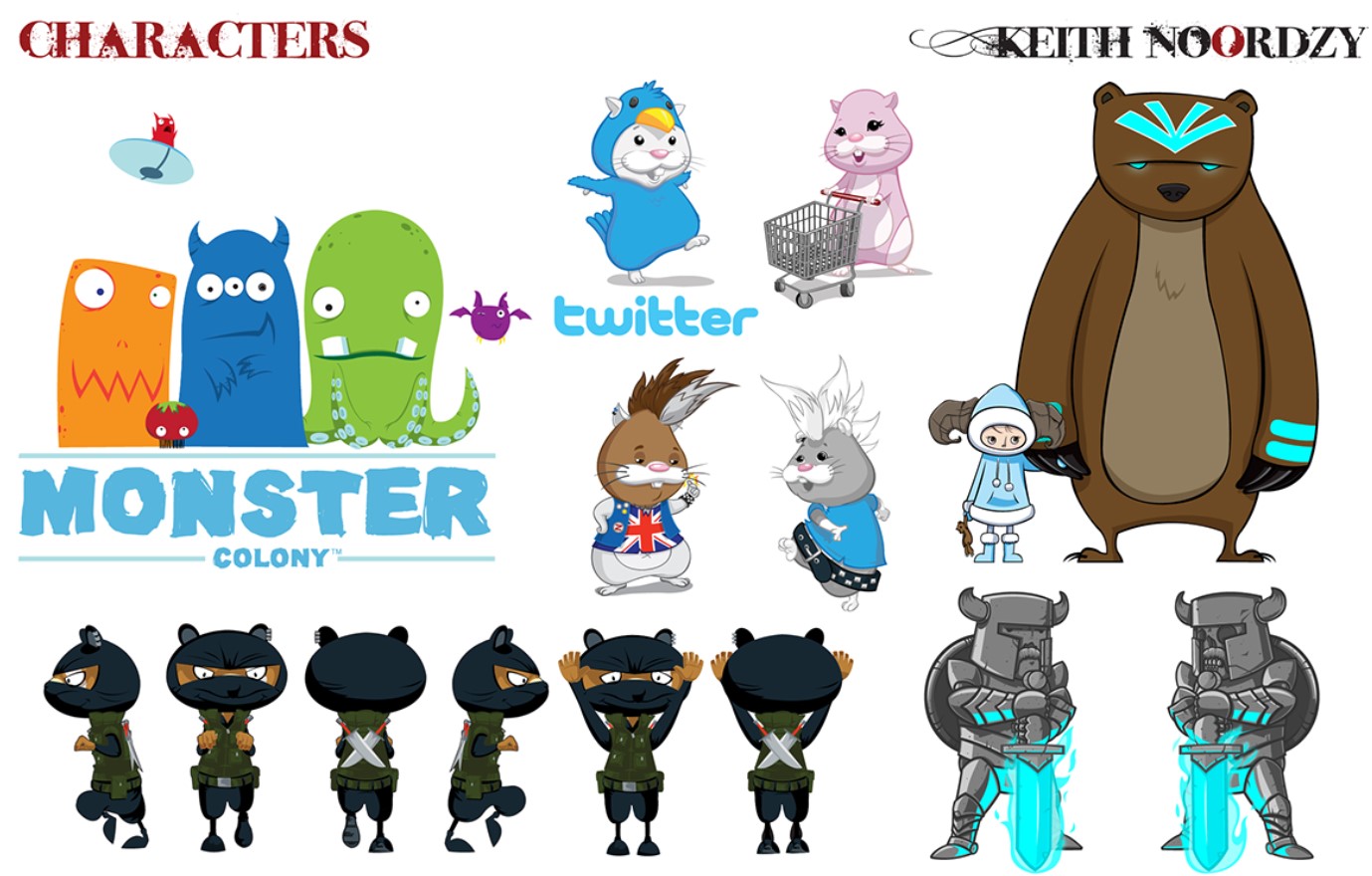
The Specifics of 2D Game Artist Jobs in the Remote Format
The movement towards working remotely has been growing in many sectors, and this includes the area of 2D game development as well. 2D game artist jobs on a remote basis provide a special combination of flexibility and chance that lets artists work from any place worldwide.
Benefits of Remote Work
Remote work can bring many advantages that improve their professional and personal lifestyle. One big benefit is flexibility: they get to work in their own homes, set up their timetables for doing tasks, and handle the balance between work and personal life more efficiently.
Moreover, this flexibility permits them to cooperate with studios and clients across the world, broadening their professional connections and chances. Working remotely could result in saving costs: 2D game artists can dodge commuting expenses and other expenditures related to a standard office environment.
Challenges of Working Remotely
Even though remote work has benefits, it also brings some problems. One big issue is the chance of loneliness because artists might not have social interaction and friendships in a regular office setting. Good communication and working together can be trickier, needing artists to use digital tools and places to be in touch with their teams.
Furthermore, 2D game artists who work remotely need to possess strong self-discipline and motivation to manage their time well. They should be able to finish tasks on time without needing someone to directly watch over them.
That is why you need to know where to look for remote 2D game artist jobs:
- ArtStation – a popular platform for artists, featuring job listings from various game studios;
- Behance – showcasing portfolios and job opportunities for creative professionals;
- LinkedIn – an extensive professional network, perfect for artists to establish connections with potential employers and discover remote job opportunities;
- Remote. co specializes in remote job opportunities across multiple industries, including game development;
- FlexJobs – a subscription-based service offering a curated list of remote and flexible job opportunities;
- Upwork – a freelance marketplace where artists can find short-term and long-term remote projects;
- Indeed – a general job message board with filters for remote positions in the game industry;
For a 2D game artist, the remote work format can bring many benefits. It offers the flexibility to work from any place while still participating in creative and funny game development projects. Using suitable tools and systems, artists can locate remote chances that match their abilities and career hopes.
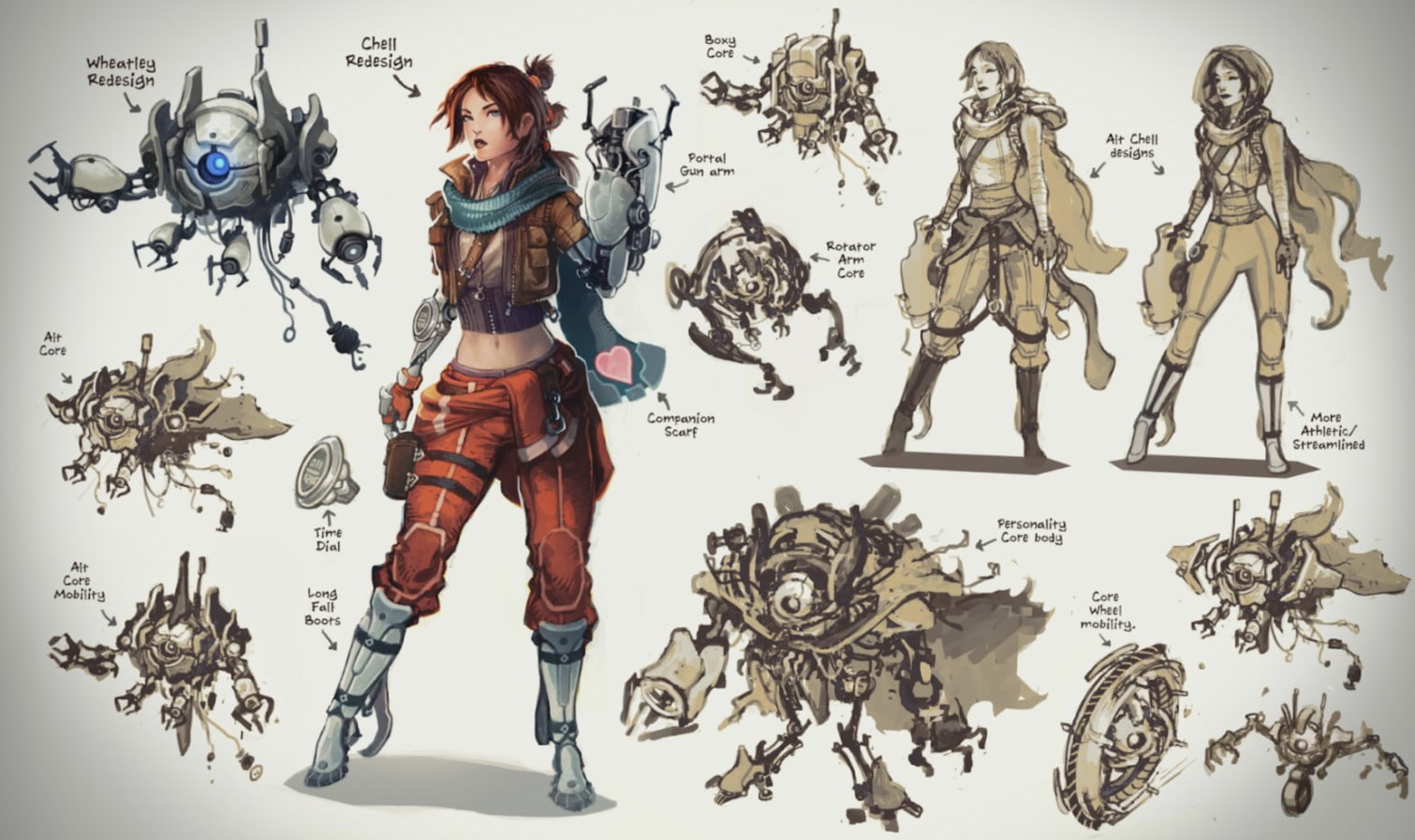
How to Build the 2D Game Artist Jobs Portfolio?
A powerful 2D game artist portfolio is very important for displaying your abilities and getting job chances in the gaming field. Your portfolio acts as a visual resume, showing off what you can do artistically- your skills, variety of styles, and how well-suited are to different types of projects.
What to include in your portfolio:
- Different Work Examples. Show various pieces of work that demonstrate your skills as an artist. These can be designs for characters, art related to the environment, animations, and UI elements – all included to exhibit your flexibility and capability with diverse parts of game art;
- High-Quality Images. Make sure all the images are of good resolution and neat. Do not put in work that is not at your current level, as it may reduce the overall quality of your portfolio;
- Project Descriptions. Give descriptions for every work in your portfolio. Talk about your function in the project, what tools were used, and the difficulties that were solved. This will assist potential employers to comprehend how you work and add value to a project;
- Process Work. Add drawings, concept art, and shots of progress to show your creative process. It can reveal how you work and solve issues, which are important in game-making;
- Personal Projects. Displaying personal or passion projects can demonstrate your drive and originality. These types of work might portray your style and areas of fascination that are separate from client-related tasks;
There are a few platforms where you can add a portfolio of 2D game artist jobs. They have certain advantages and special features:
|
Platform |
Features | Pros |
Cons |
| ArtStation | High visibility in the art community, customizable galleries | Extensive networking opportunities, industry standard | Too competitive, premium features require payment |
| Behance | Integrates with Adobe Creative Cloud, user-friendly | Wide exposure, easy to use | Less focus on gaming-specific portfolios |
| Professional networking includes portfolio sections | Great for networking and job searching | Limited portfolio customization | |
| Dribbble | Focus on creative professionals, interactive elements | Strong community for feedback, design-focused | Not as game-focused; needs invitation for certain features |
| Personal Website | Full control over layout and content | Customizable, unique to you | Requires web development skills or a service provider |
2D Game Artist Jobs – Salary Expectations
Knowing what salary to expect is important for 2D game artists. The salary can vary drastically depending on the artist’s experience, type of job, and location.
Here is a detailed explanation of what you might get as compensation, according to the level of your competence:
1) Junior 2D Game Artists (Average Salary: $ 40,000 – $ 55,000 per year)
Junior artists are generally starting their careers, concentrating on getting practical experience and improving their abilities. Their positions could be about helping in creating concept art or getting familiar with the nuances of the 2D game development niche. The salaries for junior specialists can differ, depending on the location and size of their employer’s company.

2) Mid-Level 2D Game Artists (Average Salary: $ 55,000 – $ 75,000 per year)
These artists are more experienced in handling complicated tasks. They usually manage smaller teams or tasks, having a deeper comprehension of artistic methods in game development. Their salary reflects their added duties and abilities.
3) Senior 2D Game Artists (Average Salary: $ 75,000 – $ 100,000+ per year)
Senior artists manage large projects or creative teams. They make choices on high-level design and have a big say in the artistic path that a game takes. Their salaries are higher because of their experience and positions as leaders.
2D Game Artist Jobs Salary Differences Between Freelance and Full-Time Roles:
1) Freelance 2D Game Artists
The rates for freelance work can change greatly depending on the standing, expertise, and size of a project. Normally, freelance artists might be paid around $ 30 to $ 70 per hour. Freelancers have more schedules that are flexible and they can earn more per project. However, they bear risks like instability in their work schedules sometimes as well as handling taxes and benefits by themselves.
2) Full-Time 2D Game Artists
Full-time work gives a fixed salary, benefits, and job safety. Even if the rate per hour is less than freelance jobs, total annual stability is usually more predictable and stable. Along with full-time roles come extra advantages such as health insurance coverage or retirement plans and paid leave days off from duty.
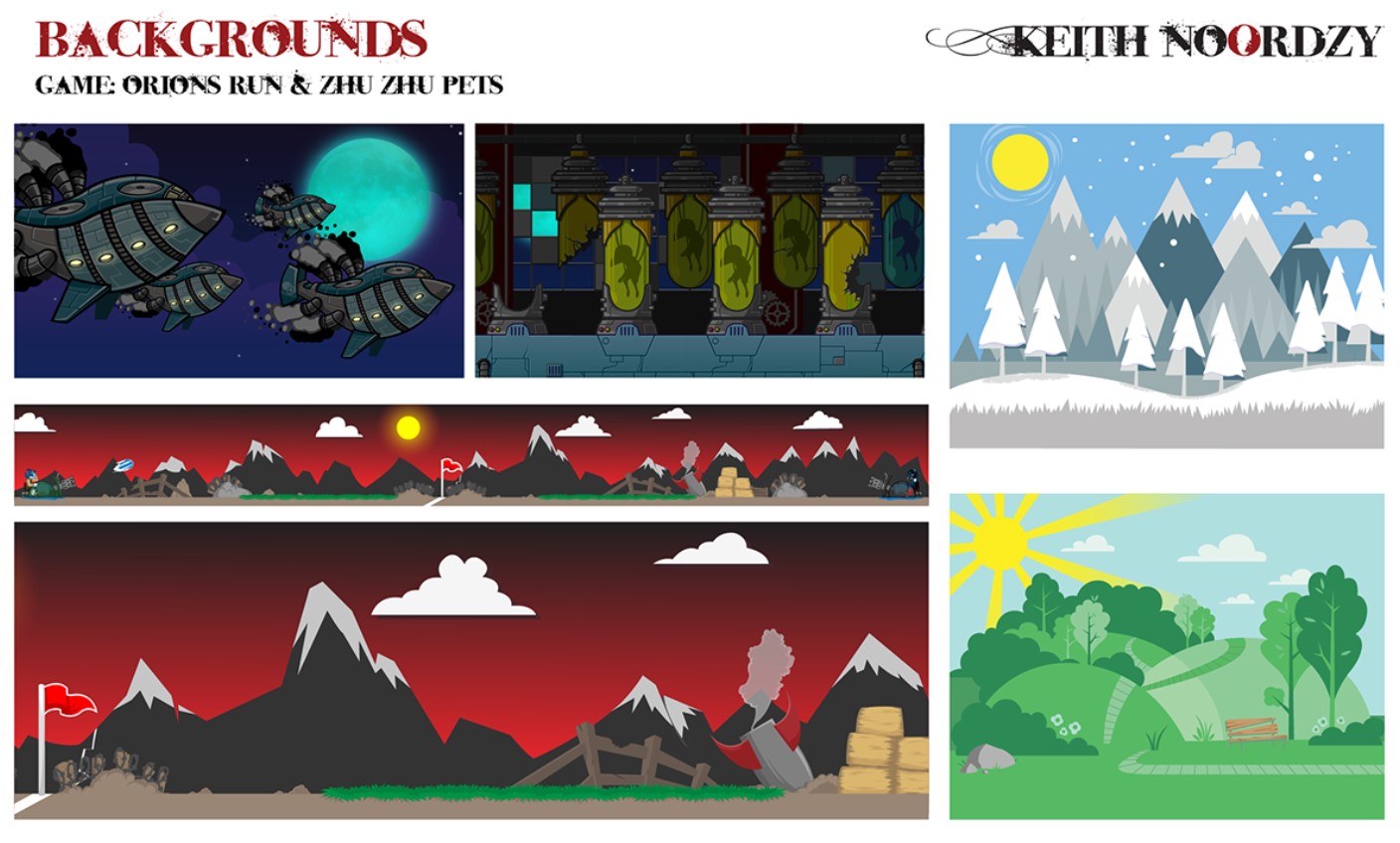
Regional 2D Game Artist Salary Differences
2D game artists’ salaries can differ because of where they work. This shows the cost of living and how much the region requires professional 2D game artists:
- United States. In big tech hubs such as San Francisco, Los Angeles, and Seattle salaries are usually on the higher side for senior positions with average annual wages of $ 100,000 or more;
- United Kingdom. In the largest cities such as London, salary could be around $ 50,000 to $ 80,000 whereas other areas might provide less pay;
- India. The salaries are generally lower, starting from $ 10,000 to $ 20,000 per year for junior 2D game artists in Bangalore and other large cities. Senior 2D game artists earn up to $ 40,000 per year;
Check the 2D game artist jobs salary comparison table – based on the information provided by the Glassdoor statistics:
|
Experience Level |
United States | United Kingdom |
India |
| Junior | $ 40,000 – $ 55,000 | $ 30,000 – $ 45,000 | $ 10,000 – $ 20,000 |
| Mid-Level | $ 55,000 – $ 75,000 | $ 40,000 – $ 60,000 | $ 20,000 – $ 30,000 |
| Senior | $ 75,000 – $ 100,000+ | $ 50,000 – $ 80,000 | $ 30,000 – $ 40,000 |
The salary rates are affected by the experience, type of job, and place. Starting salaries for new junior artists might be on the lower side, but senior professionals who have more knowledge and authority can expect the highest level of salary. When finding a 2D game artist for hire, you ought to consider this important factor.
Working as a freelancer gives you the chance to work when it suits you and possibly earn more money per hour, but it also brings difficulties compared to having a solid full-time job.
Also, you may check the following video where the experienced 2D game artist gives serious (though, sarcastic at some point) advice about getting a job during these challenging times.
Is It Possible to Get the 2D Game Artist Internship in 2024?
Getting a 2D game artist internship can be a turning point in your professional journey. Such experience can provide you with practical experience, chances to meet people from the industry, and help you create an impressive body of work.
To get an internship offer you can try to get to the largest gaming companies like Blizzard Entertainment, Ubisoft, EA, etc. These companies usually have organized internship systems for people who want to become professional 2D game artists someday. Going through the 2D game artist internship in such places can give you experience with big projects and what is considered normal in the industry.
However, keep in mind smaller studios and self-employed game developers can also offer internships. These roles may give a chance for more practical learning and working together with skilled artists.
Tips for Beginners:
- First and foremost, you need to work hard to create an outstanding and non-boring 2D game artist portfolio. Be ahead of other newbies, add the works that may interest the potential employers;
- Become familiar with such industry-required tools such as Photoshop, Illustrator, etc.;
- Keep an eye on industry trends and new technologies that are required for 2D game artist jobs;
- Join forums, attend events, and connect with other game artists to build a strong network;
- Keep honing your skills by working on personal projects that may appear in the portfolio or bring additional income;
You can also join the Reddit discussion where aspiring 2D game artists share their experiences and devices for beginners. You may find many useful recommendations from the community.
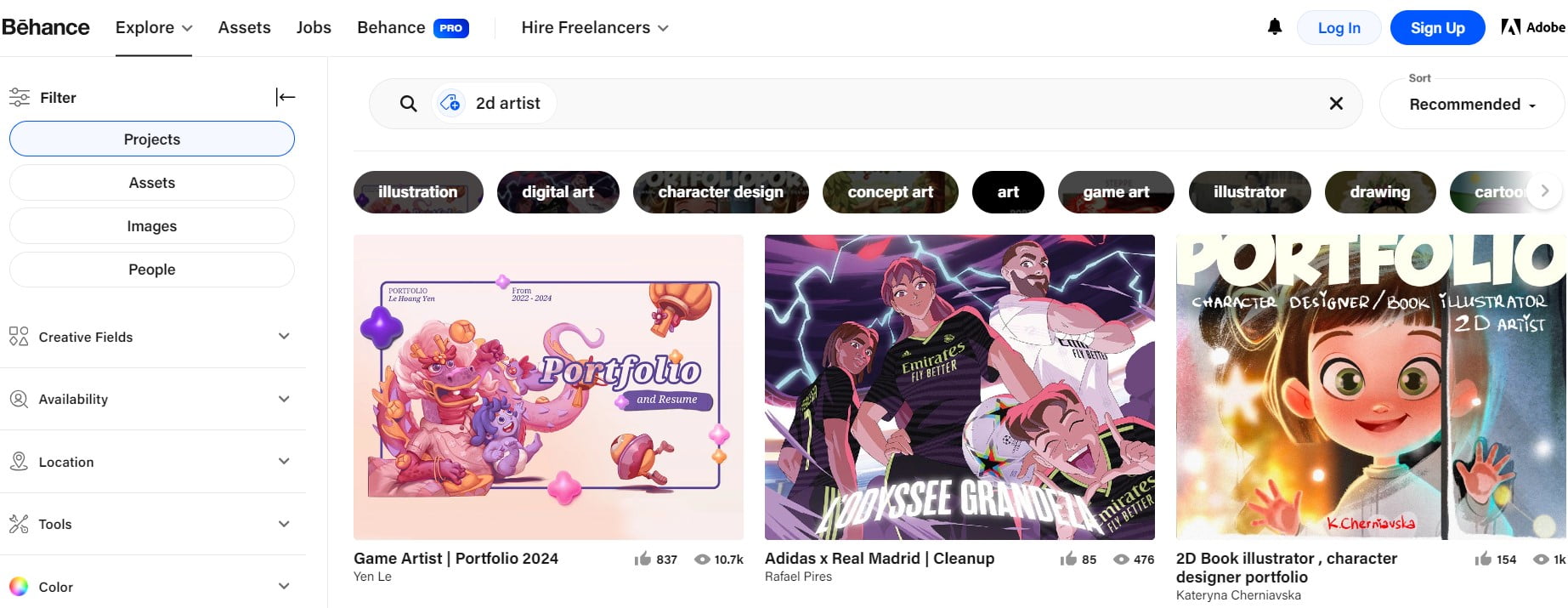
Frequently Asked Questions
What is the typical work environment of 2D game artist jobs?
The work setting can differ – from indie studios to large corporations. Many artists operate in a laid-back but concentrated studio environment that promotes creativity and cooperation. The atmosphere is usually team-centered, with daily activities including group discussions and evaluations by colleagues.
Due to the increased demand for 2D game artist jobs in remote, artists can now perform their tasks from home or in co-working spaces. They connect with their teams online and pass on creations through digital platforms.
How hard is it to become one of the 2D game artists?
The difficulty level of getting 2D game artist jobs can vary according to your skill, the complexity of projects you handle, and what your employer expects from you. This work needs ongoing honing of artistic skills, staying up-to-date with new tools and methods, as well flexibility for changing trends in the field. It requires good attention to detail, having an eye for aesthetics, and being able to handle pressure. Yet, for passionate artists who desire to make game art, these difficulties are precisely what makes it an appealing and enjoyable profession.
What are the most common challenges in 2D game artists’ jobs?
The BandurArt team explores the secrets and challenges related to the 2D game artist job. Let’s check out the most common challenges:
- Strict deadlines and limited periods for certain tasks can be a real challenge for an artistic spirit;
- Keeping up with the required artistic style and being consistent in it to make sure the game’s art looks amazing from beginning to end;
- The demand of learning new technologies and software to deliver the most efficient artwork that would become memorable by 2D game fans;
- Limited resources. You have to be prepared that your 2D game art ambition has to be tamed if the team offers a scarce budget. Also, the platform’s hardware can limit your artistic style;
- Keeping up with what’s happening in their industry and always working on improving their abilities to stay ahead in the profession;
Conclusion
If you decide to follow a career in the niche of 2D game artist jobs, you won’t get bored, that is for sure. However, in case you are not scared of a few bumps on this road, you may find very creative people who will help to create really awesome games and projects. If you have an interest in characters, environments, animations as well as UI/UX or pixel art – there’s always room for every kind of artist inside the gaming industry. The BandurArt team is always here to help you on your way with free advice or professional consulting because we have already walked and keep walking the part of 2D art game development.

